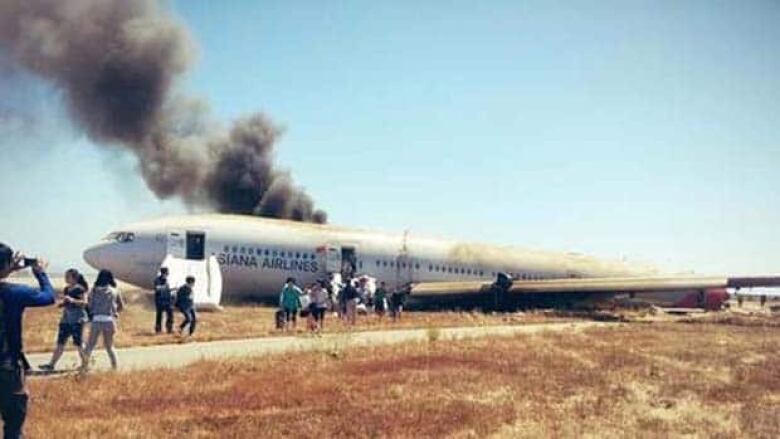Are the odds of surviving a plane crash improving?
Recent changes in design, technology and training cited for boosting safety

When Asiana Flight214 crashed on the runway in San Francisco onSaturday, many expressed surprise that only two of the 307 people on board died. Passengers and crew scrambled to get out of the burning plane as emergency personnel tossed knives tothe crew to cut people out of their seats.
San Francisco Fire Chief Joanne Hayes-White credited the professionalism of the crew, the quick response of emergency personnel and the ability of most of the passengers to remain calm for the small loss of life. More than 180 peoplewere sent to hospital, and many were released within 24 hours.
"We were expecting a lot of burns," said Dr. Margaret Knudson, San Francisco General Hospital's chief of surgery."But we didn't see them."
Such a successful evacuation from a burning plane wouldn't have been possible as little as a decadeago.
On June 2, 1983, an Air Canada DC-9 carrying 41 passengers and five crewhad to make an emergency landing in Cincinnati after a fire broke out in one of the bathrooms.Twenty-three passengers died including Canadian singer Stan Rogers because they couldnt get off the plane fast enough to escape the flames and smoke.
A lot has changed since then, and the chances of surviving an airplane catastrophe are much higher because of improvements made to the planes and the way airline crews are trained.
Canada's Transportation Safety Board (TSB) reports a "significant downward trend" in airplane accident rates in the past decade.The total number of accidents involving all kinds of aircraft that were registered in Canada in 2003 was 373 while in 2012, it was 290.
Arnold Barnett, a professor of statistics at the Massachusetts Institute of Technology who studies commercial flight safety, told the New York Times that a person could fly every day for an average of 123,000 years before being in a fatal crash.
Changes that increase survival rates:
SEATS:Bolts hold the airplane seats to the floor and are designed to withstand a force of up to 16 times that of gravity, which prevents them from collapsing and literally squashing the passenger.
EXITS:The doors have been made simpler to open and can be swung out of the way easily.
LIGHTS: Rows of lights on the aircraft floor change from white to red as they get closer to an exit.

MATERIALS:Seat cushions and carpeting are composed of fire-retardant materials that burn slower and dont give off dangerous gases.
PLANE BODIES:Structural weaknesses evident in previous crashes have been strengthened through engineering designs.
FLIGHT SYSTEM:Ground proximity systems warn pilots if they are too low, telling them to "pull up" while an alarm sounds. A radar system also alerts them to other planes nearby.
ON THE GROUND: Better radar systems keep planes from veering onto wrong taxiways or heading onto one thats already being used.
CREW:Flight attendants now train on completereplica of planes during crash simulations.
EMERGENCY RESPONSE:Fire crews at airports hold frequent drills where crashes are simulated and most importantly, practice co-ordinating their rescue efforts with area hospitals learning on-site trauma care.
With files from The Associated Press












_(720p).jpg)


 OFFICIAL HD MUSIC VIDEO.jpg)
.jpg)



























































































